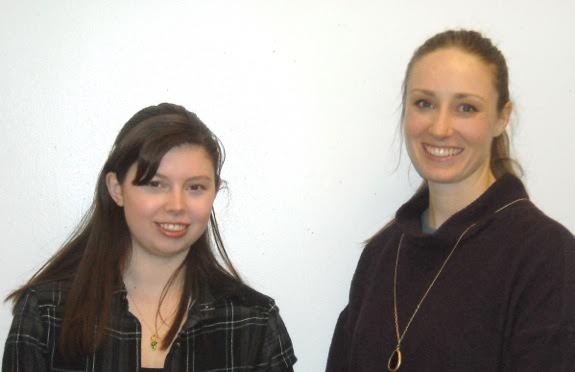
BY BARRY WARNER
In high school, a videographer is responsible for recording live events and documentaries. The video advances the culture of the high school and can be placed on its website for greater viewing by the community. The videographer and crew have to set up the equipment and make the necessary adjustments to the lenses, microphones and lights to capture the footage successfully.
“From school-wide assemblies to special speakers and student organized events, Grace Griffin has dedicated countless hours to capturing the spirit and unique community of Nyack High School through short videos and documentaries of school events,” Film and Video Production Teacher Caitlyn VanderMass told the Rockland County Times. “Her thoughtful planning, organization of student film crews and hours upon hours in the editing room, have helped to bridge communication between the happenings within our school walls. When not behind a camera or editing footage, Grace puts her technical competence and artistic abilities to work helping to design the high school production studio for future filmmakers.”
“In one example, I filmed a speech given by a Holocaust survivor in order to preserve the presentation for future history classes,” Griffin said. “The equipment used included the video camera with sound, a tripod and lighting to shoot the scene. I organized a student crew of 4-5 members to help get the job done. I have taken film and video production for the last four years to help me prepare for this responsibility. In addition, I edit out parts of the video that aren’t necessary for the final product.”
According to Grace, how the event is filmed can make or break the video:
1 An important aspect of filming is using a variety of angles. Focus on the speaker and switch between several angles to give the video some liveliness. Some angles may cause shadows on the presenter’s face or body.
2 Mark your safe zones from which shooting will take place to avoid a member of the audience to bump into the camera.
3 Run some tests ahead of the event to determine which areas would be safe enough to film from.
4 If the event is a speech or panel discussion, have all of the participants in the frame.
The most basic feature of a digital video camera is the viewfinder. It enables the user to look at the scene being filmed and move the camera accordingly. In a digital video camera, the viewfinder is an LCD screen. The size of the screen varies from model to model, but is mostly a small display just big enough to show vivid images of a scene. In smaller cameras, it forms part of the camera’s body at the back. In big cameras, it flips to the side, away from the camera’s frame when in use. The viewfinder can rotate to allow the person to film from various angles. An integrated microphone is located next to the lens to record those sounds from the scene the lens points to. The zoom feature enables distant scenes to be filmed with ease. Digital video cameras incorporate a stabilizer that reduces the ‘shake’ in the video images.
Editing the footage gathered is also another responsibility of videographers. It’s done in the studio during the post-production of the event. They use editing software to cut out parts of the video that are not necessary to the finished product. They may also add graphics, text or other special effects to the footage. Videographers are also integral to the creative production process, as they may make suggestions on how a particular scene should be shot to highlight a subject’s features. They may also make suggestions as to what topics to cover or the personalities to interview for a documentary. It’s common to shoot far more footage that’s actually needed and only the best material is chosen in the final edit. Most videos serve a purpose, such as telling a story or providing information. Editing is an important step in making sure the video flows in a way that achieves its goal.
“My parents are in the entertainment field and I grew up in that environment,” Griffin concluded. “I volunteer to give back to the community by recording current events that take place in the high school and are preserved for future students to view. I plan to major in lighting design for theaters when I go to college.”

You must be logged in to post a comment Login